Hello friends,
It's been a while since I last wrote for this wonderful community, but after a few days of rest in Galicia, I wanted to share a very nice experience that began as a walk through Cambados and ended up being a phenomenal gastro-cultural experience.
## Cambados
Cambados is a small town located in Galicia, on the Arousa estuary, with a seafaring tradition that can be felt in every corner and is reflected in several of the statues found throughout the town in its well-kept and wonderful parks.
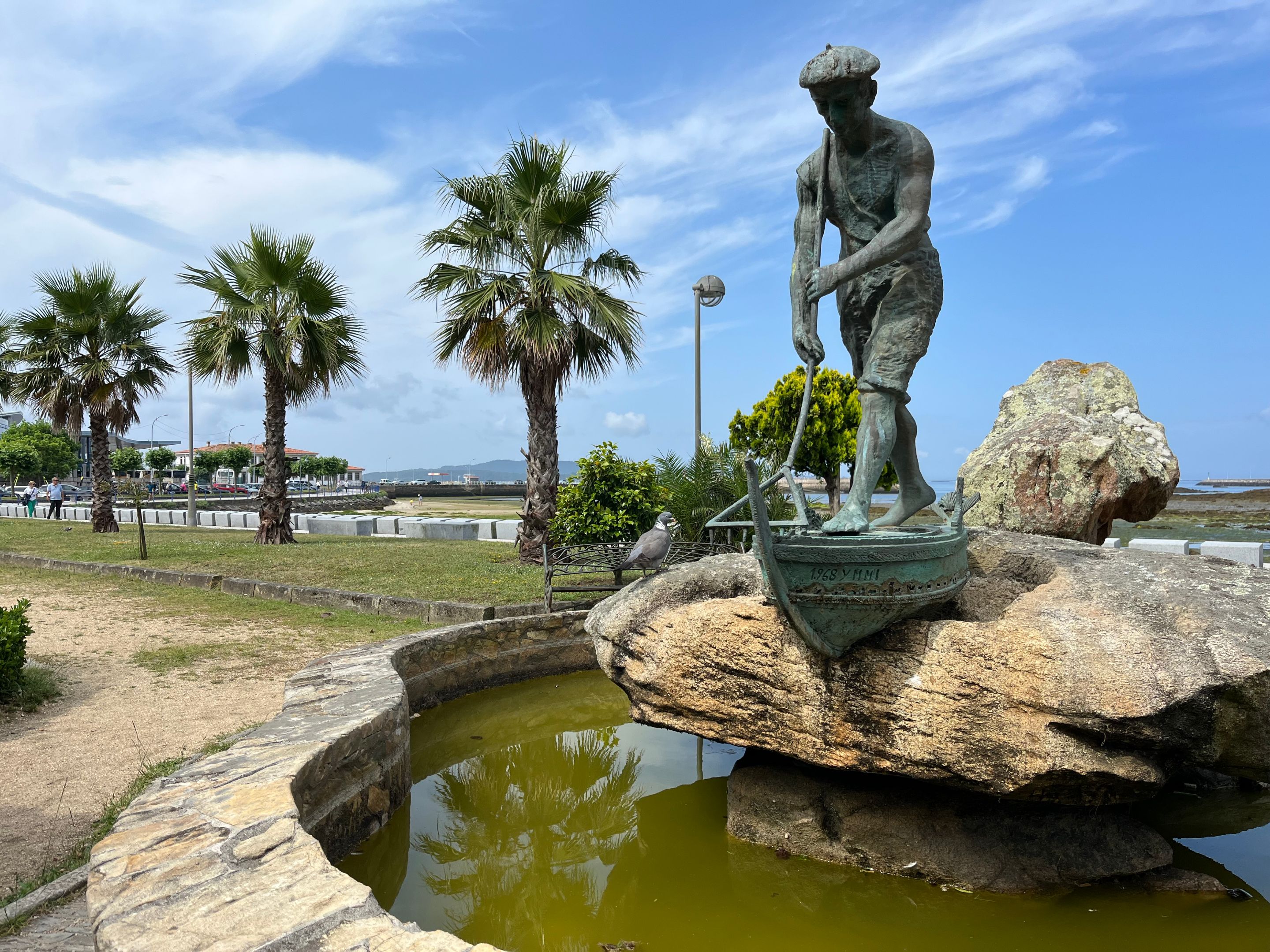
I took this walk through the town of Cambados with my friends Eduardo, Miguel, and Antonio a few days ago, during a weekend getaway that we planned on the spur of the moment, except for booking a small tourist apartment in a town near Cambados.
Early on Saturday morning, with no fixed idea of what to do, we decided to visit the town of Cambados, strolling along its promenade, where a light breeze blew on a hot morning as we gazed out over the marshes.
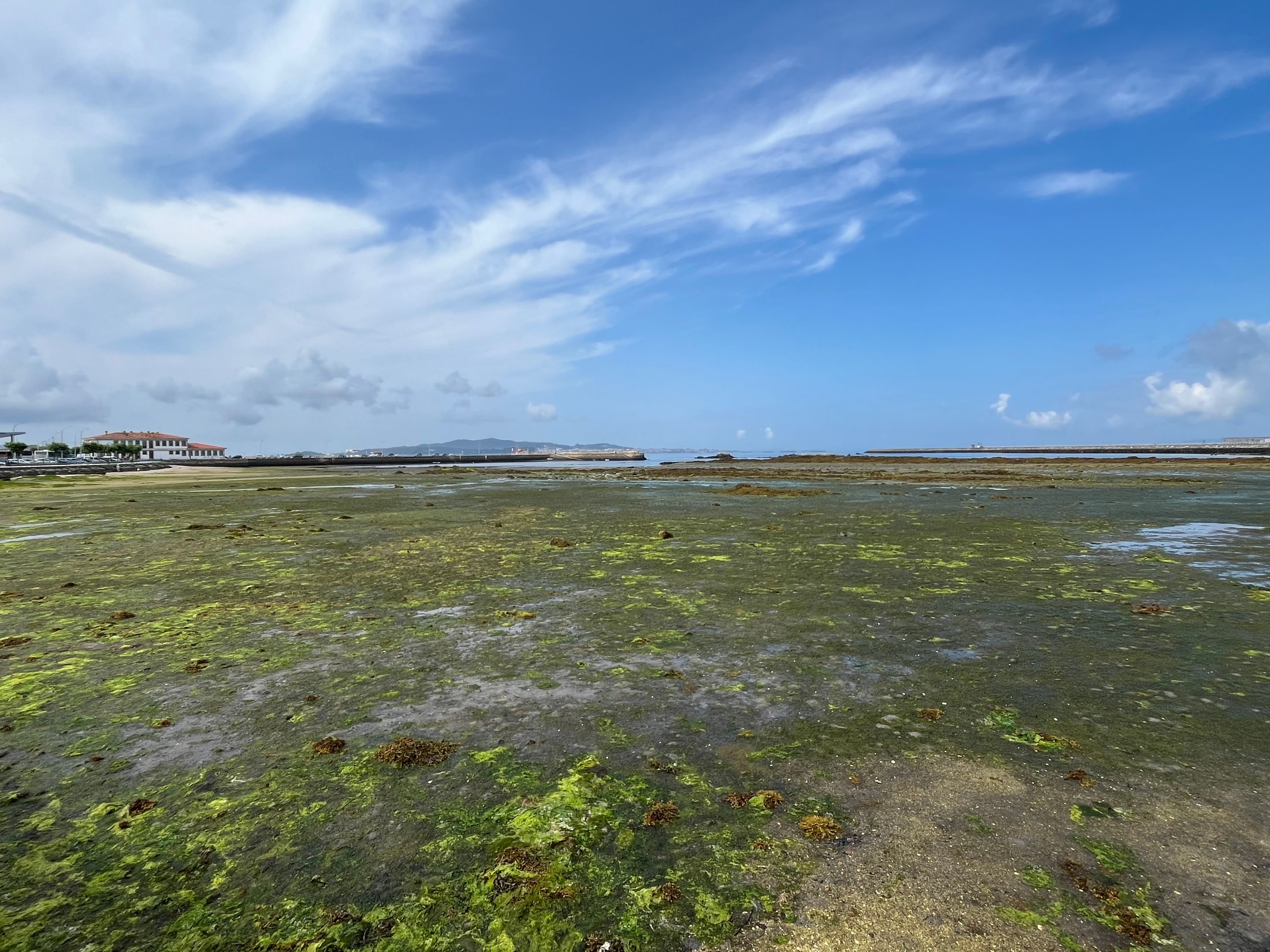
There, on the promenade, I was struck by a statue of a woman holding a rolling pin in an aggressive position.
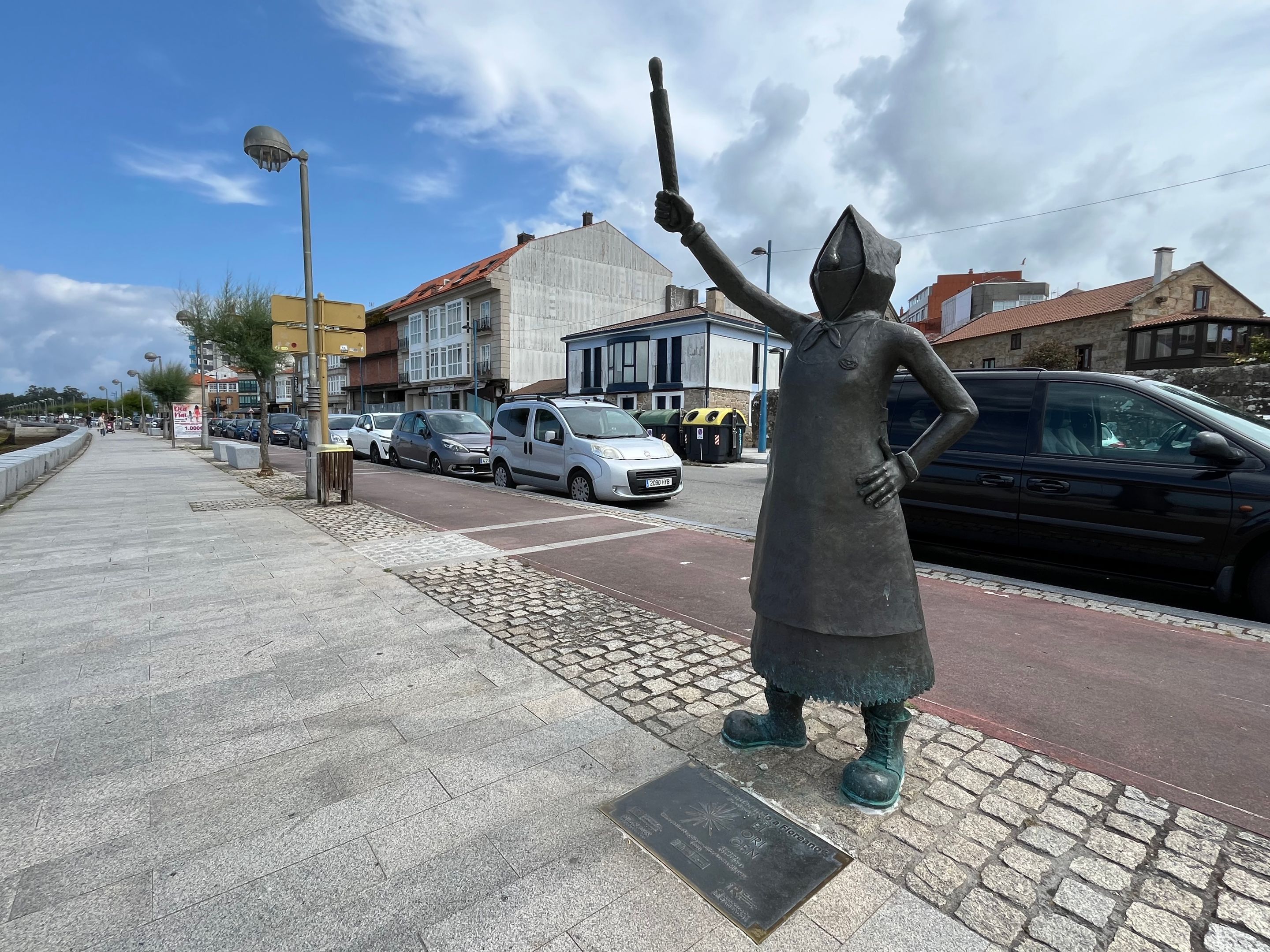
This statue is a true reflection of the matriarchal society in northern Spain, where women are usually in charge, especially when they reprimand their husbands for coming home drunk when dinner is already on the table. (That's what the plaque in front of the statue said).
Continuing our walk through the village, I noticed well-kept parks with small replicas of aerial granaries called cabazos, which are very typical of Galicia.
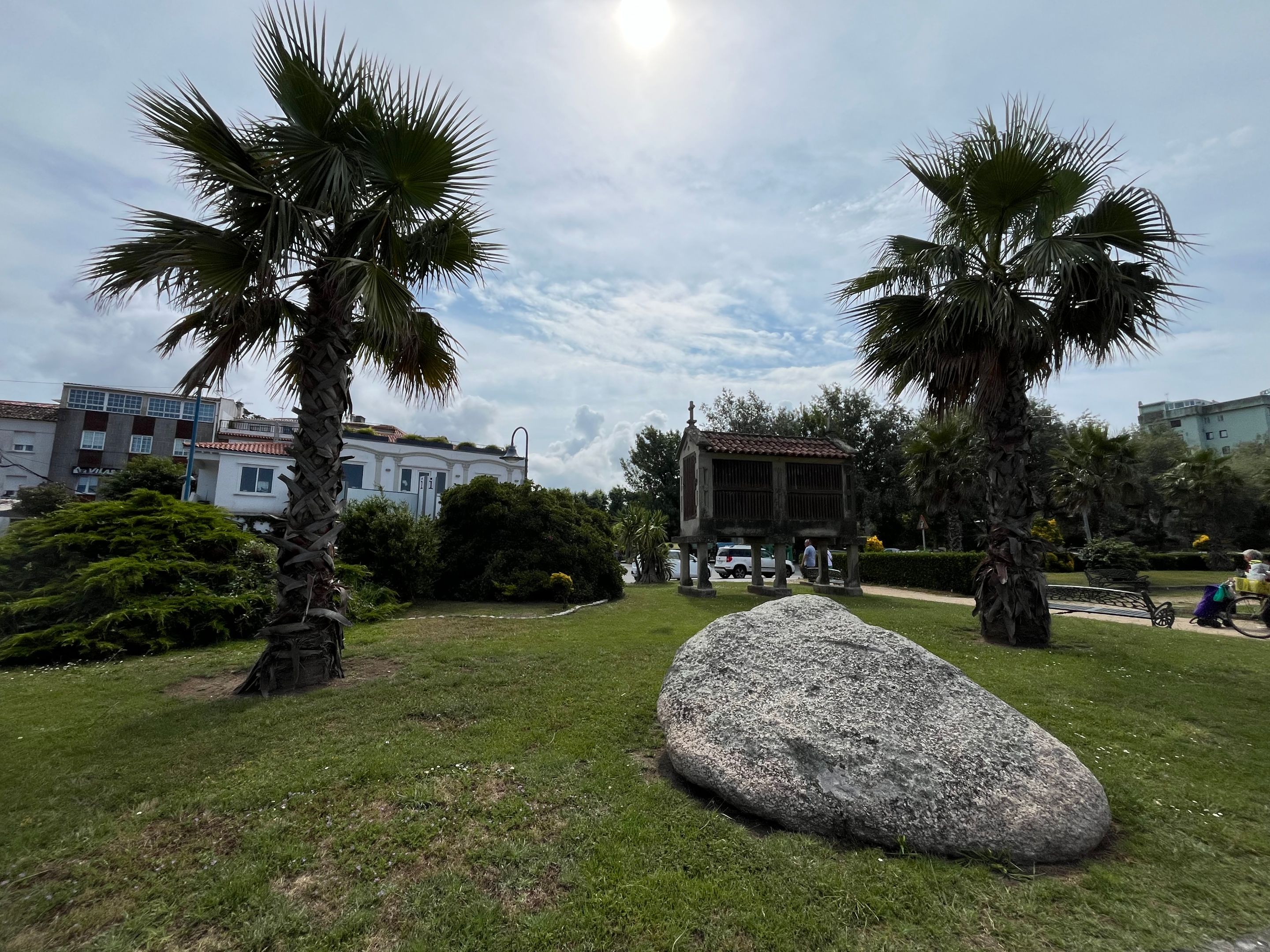
As we entered the village, we got lost in the narrow streets of the historic center with its typical houses built with granite blocks. This material is very expensive, but it is abundant in the area.
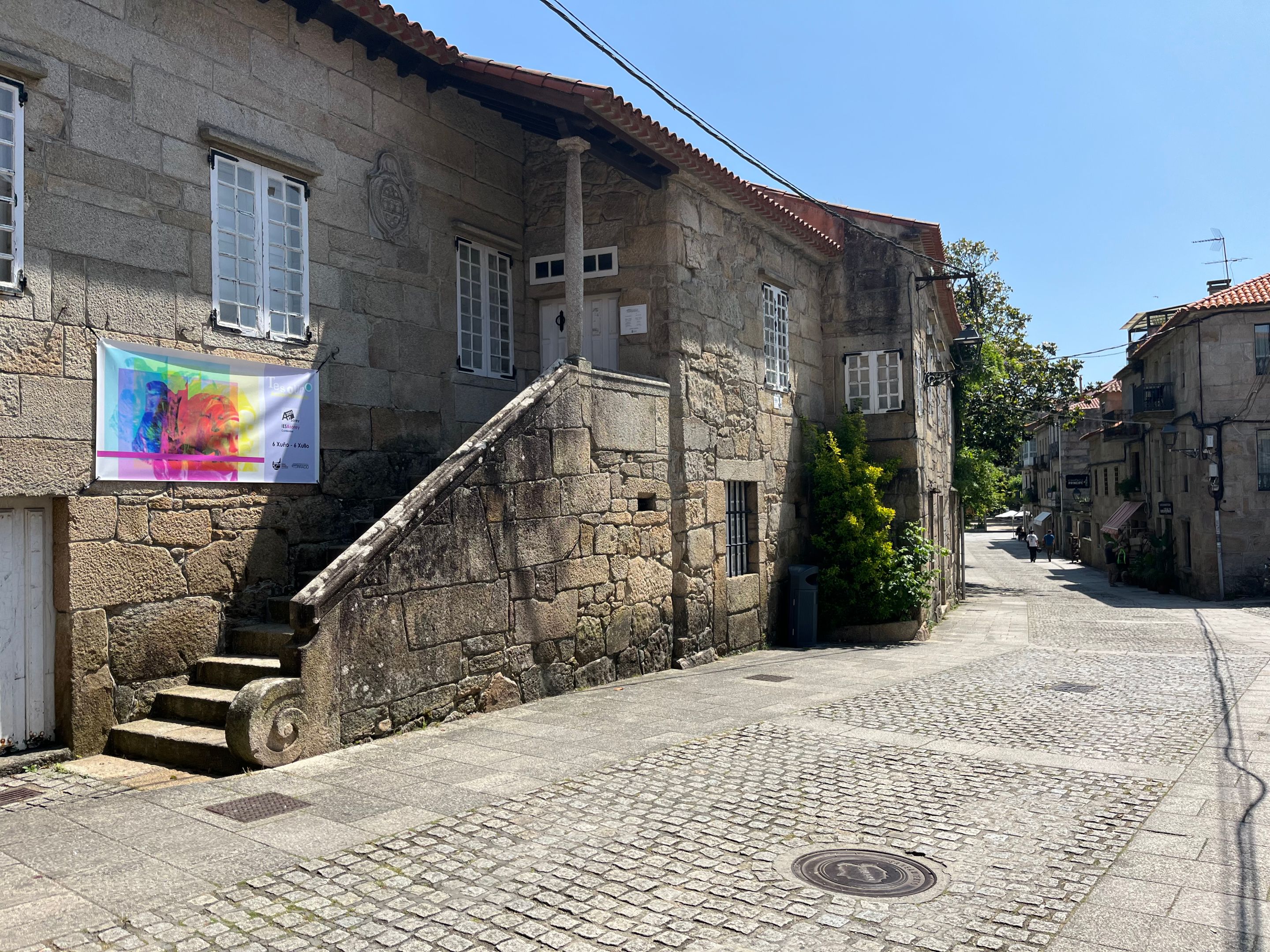
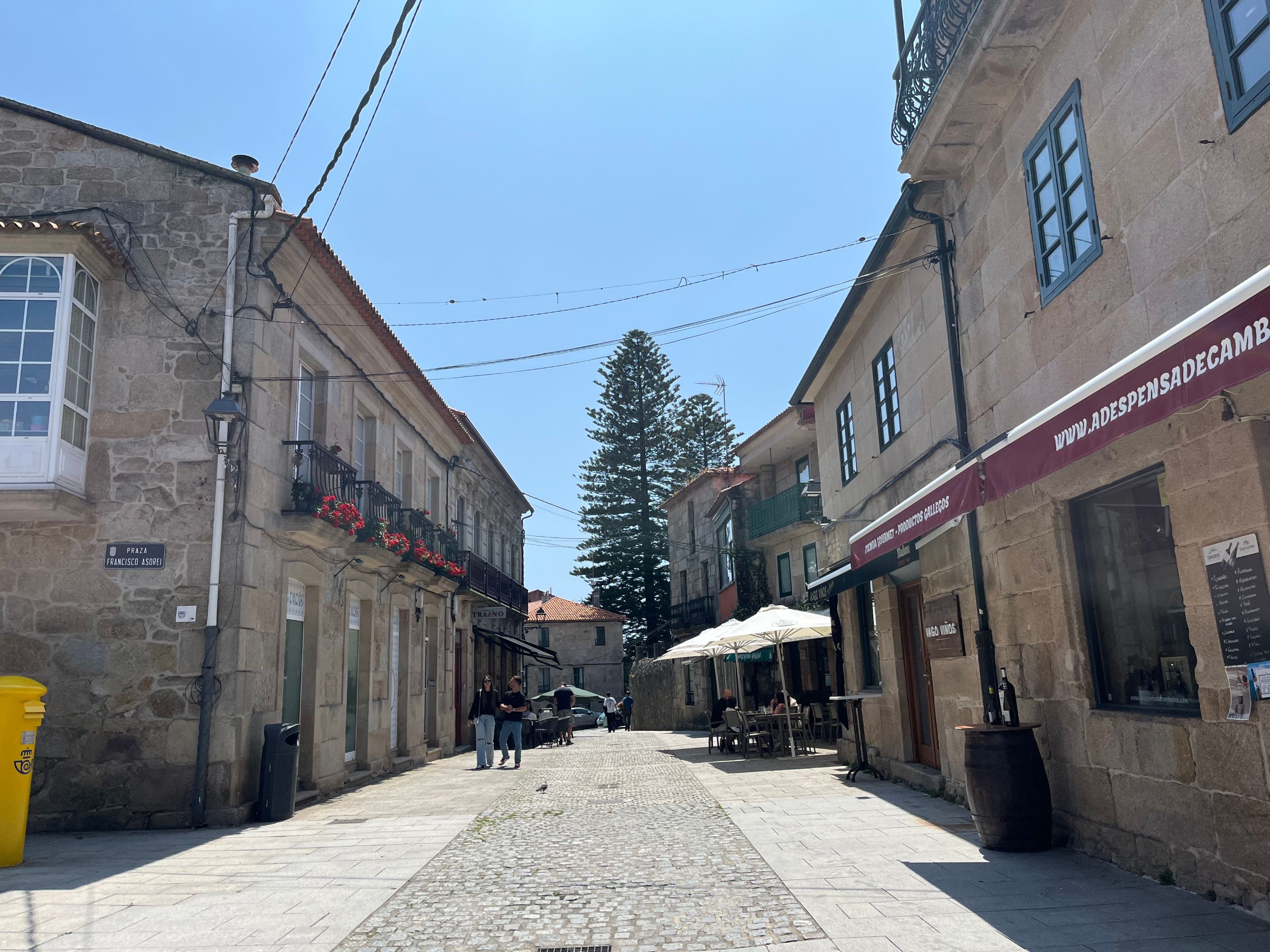
In several houses, they offered wines and spirits for sale. In particular, Albariño wine with the Rías Baixas designation of origin, which is the local wine produced by many of the families in the town from the surplus grapes that they do not sell to the large wine producers in the area.
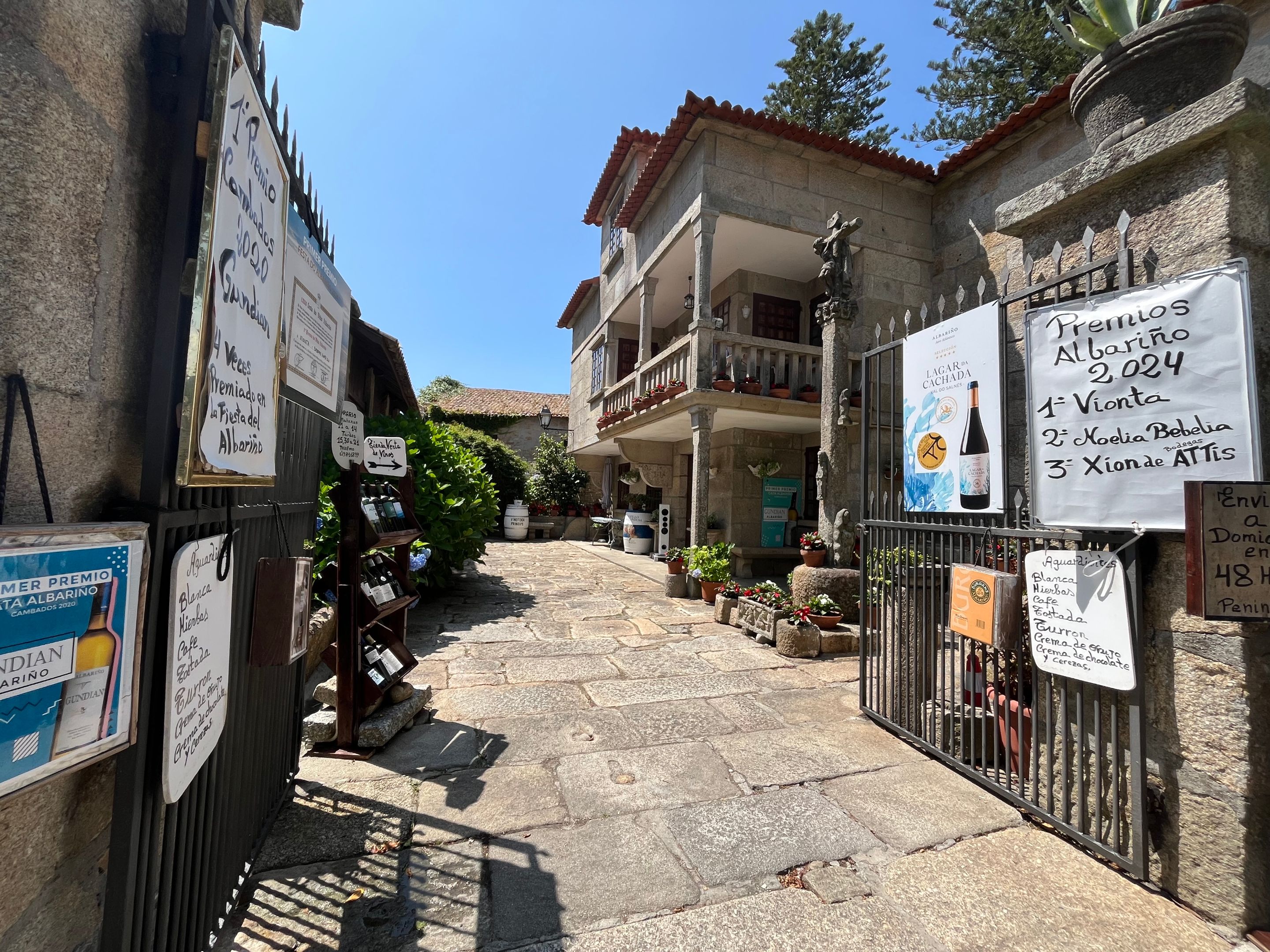
Cambados is the birthplace of Rías Baixas wine, a white wine made from Albariño grapes, which is why, inspired by seeing these houses selling wine, I decided to look for a winery where we could enjoy a tasting and learn more about this type of wine.
## Pazo de Fifiñanes
With the help of my phone, I was able to find a winery that bottles the first bottle of Albariño wine from the early 20th century. Specifically, the Pazo de Fefiñanes winery.
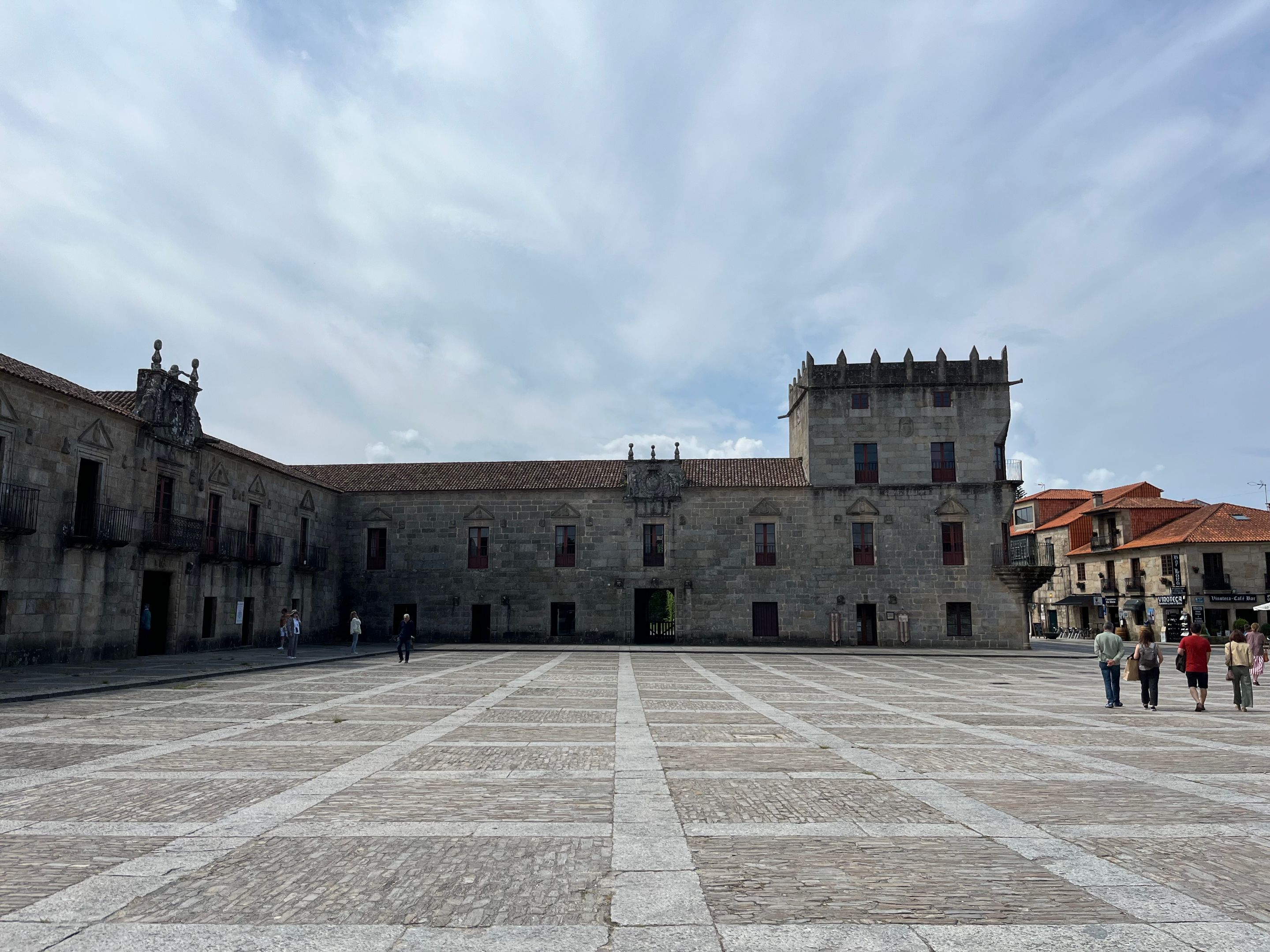
This winery, as you can see in the photo, is not your typical modernist winery, but is located in the heart of Cambados, in a pazo (Galician palace) belonging to the Fefiñanes family.
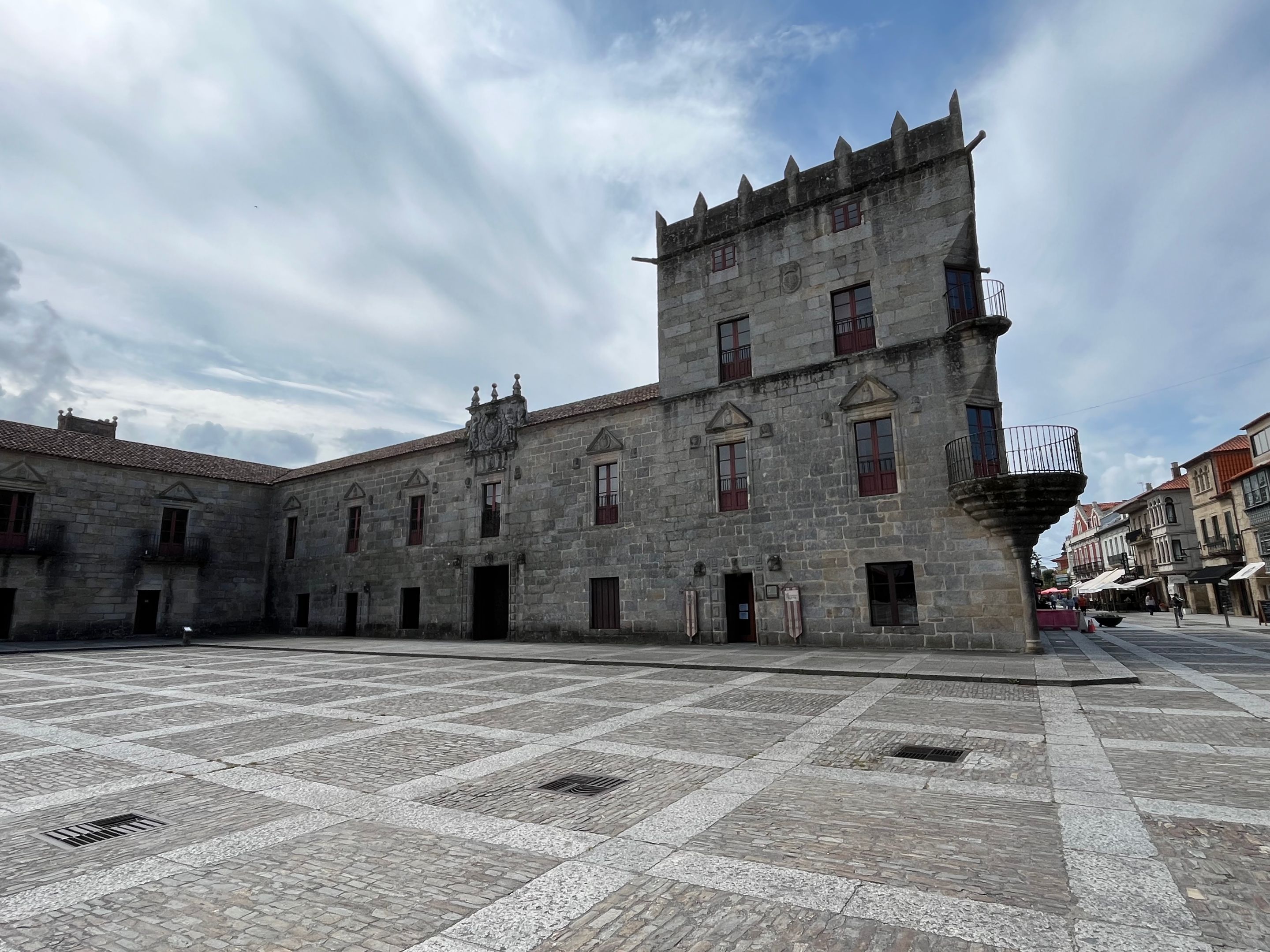
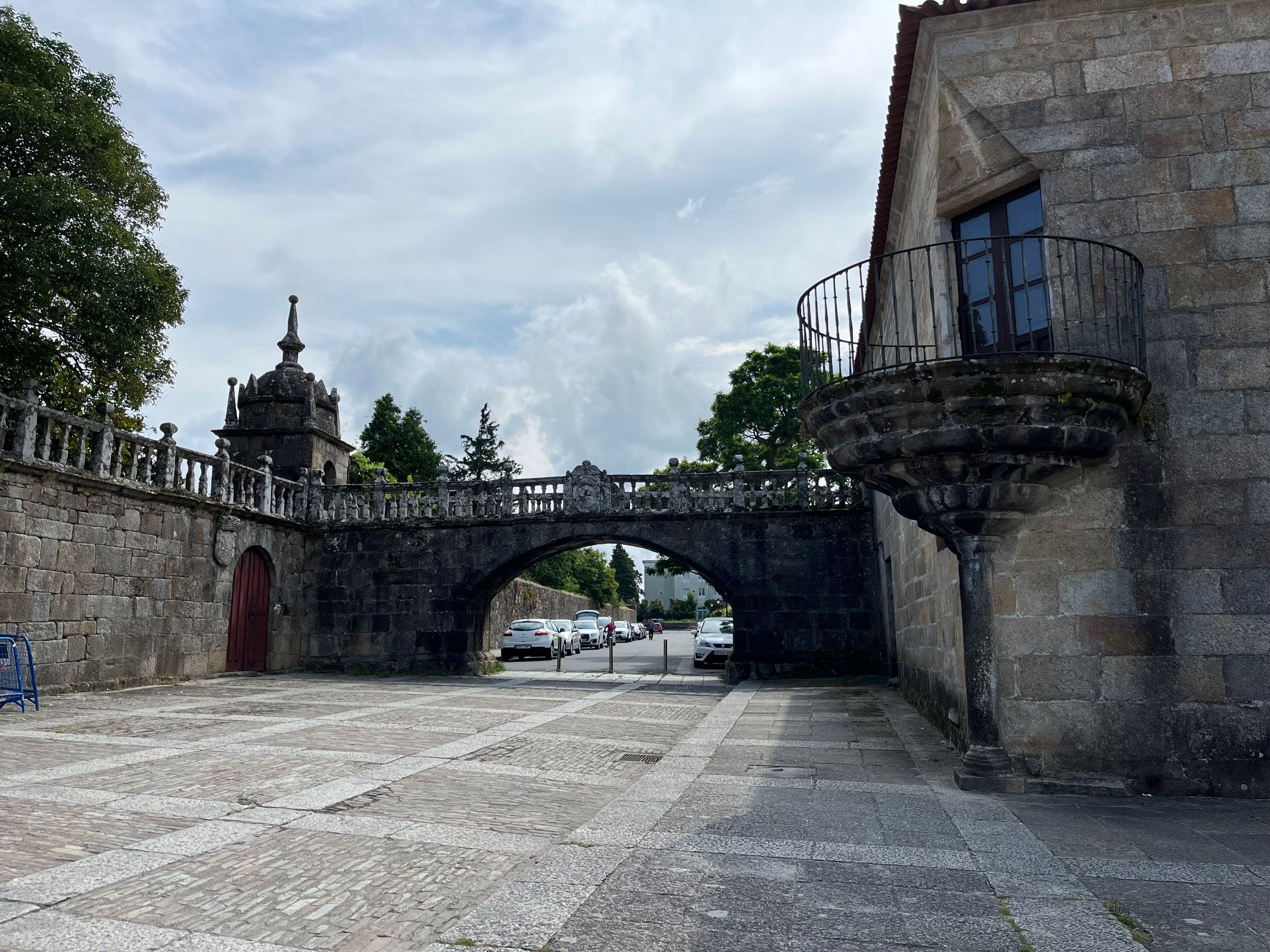
This palace is located in the Plaza de Fefiñanes, very close to the town's main church.
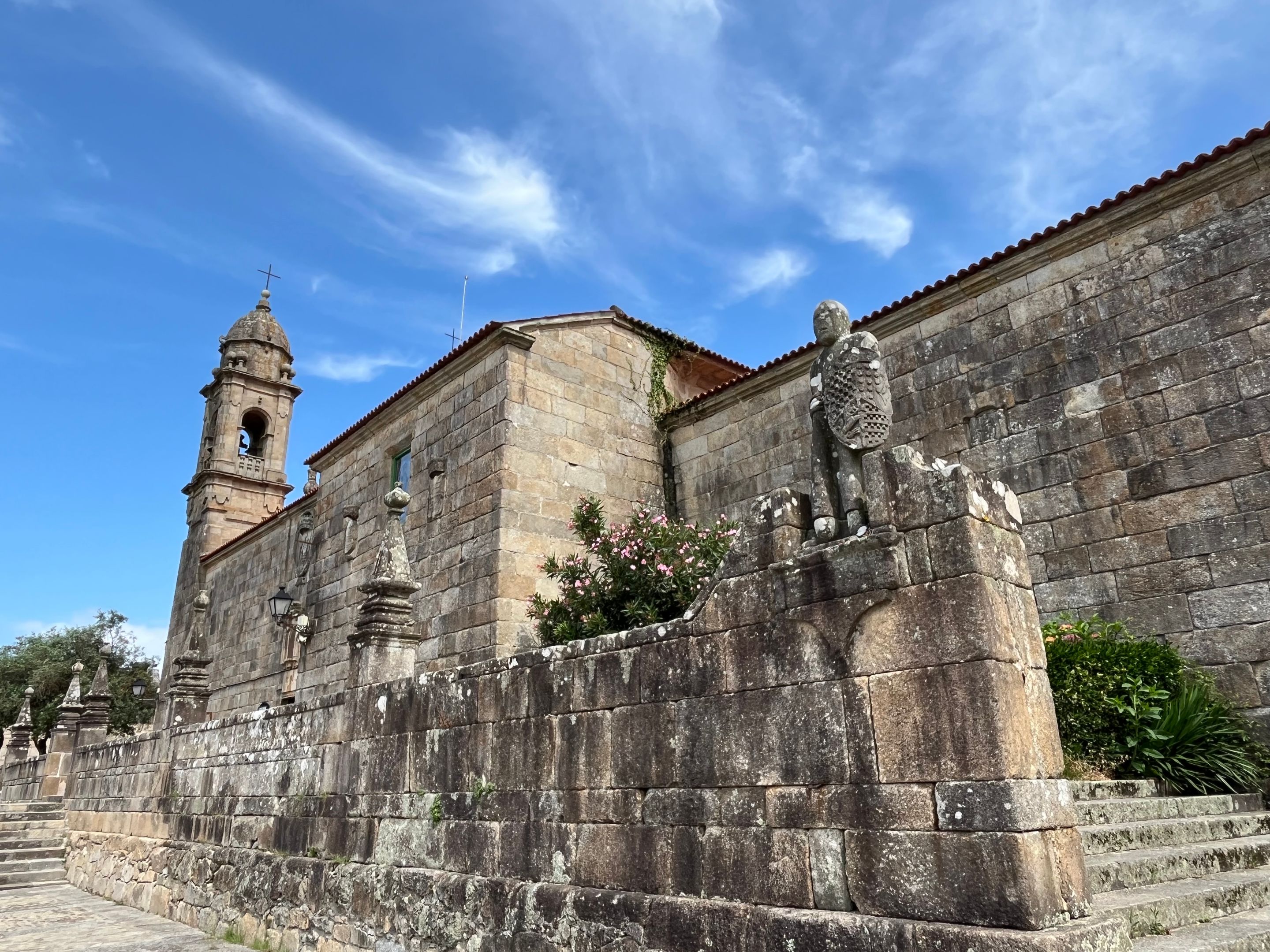
Once we arrived at the pazo, we booked a tasting and tour of the winery for €25 per person, which included a tasting of the three main wines they sell.
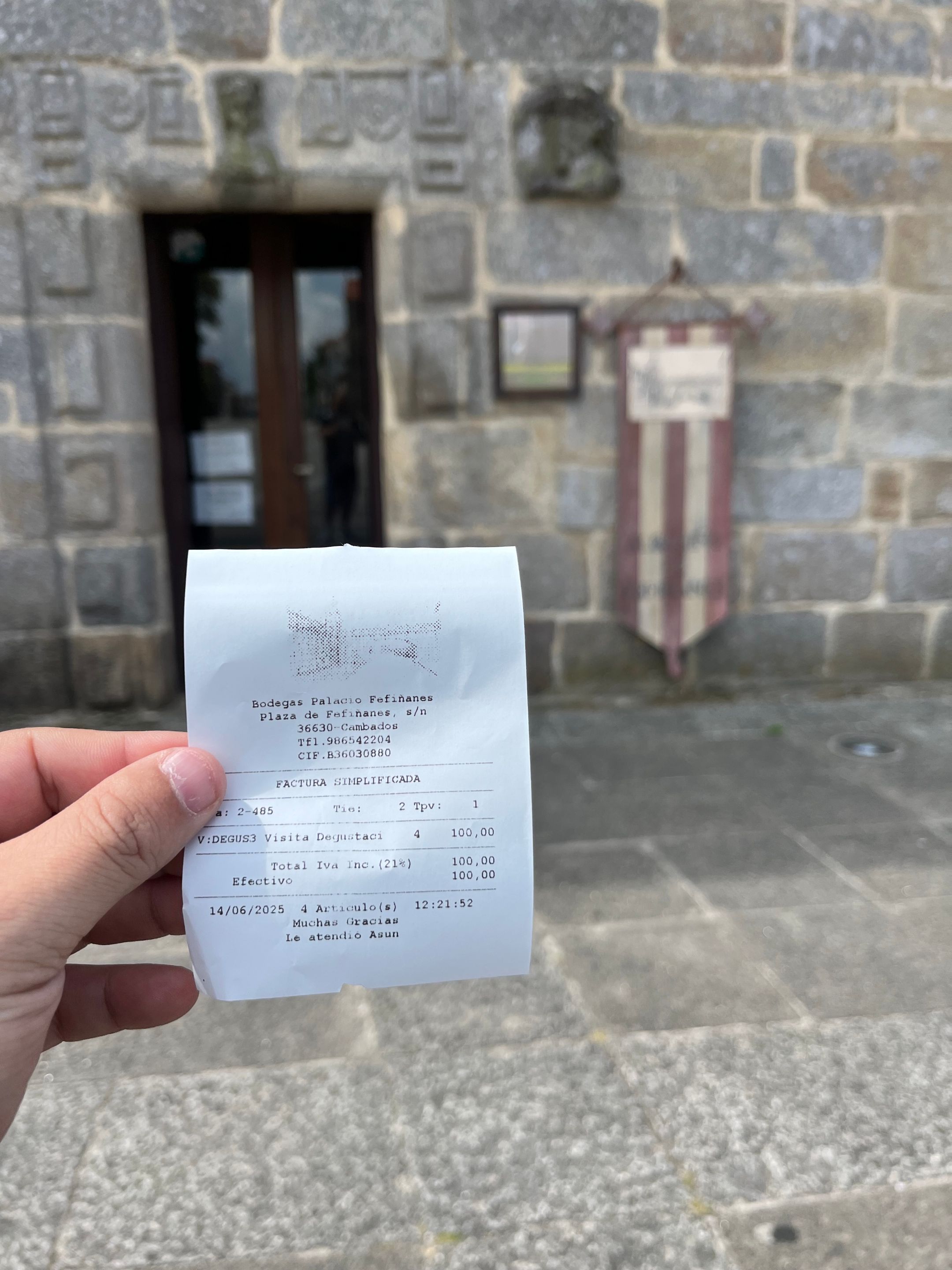
Once inside the pazo, I could see how extremely well cared for the whole environment was, with a view from inside the pazo of the flowering bushes adorning the interior façade.

The gastro-cultural tour began with a comprehensive explanation of the variety of grapes used in the area. We were told about the main properties of the Albariño grape variety and how growing this variety near the sea gives the white wines made from it a special flavor.
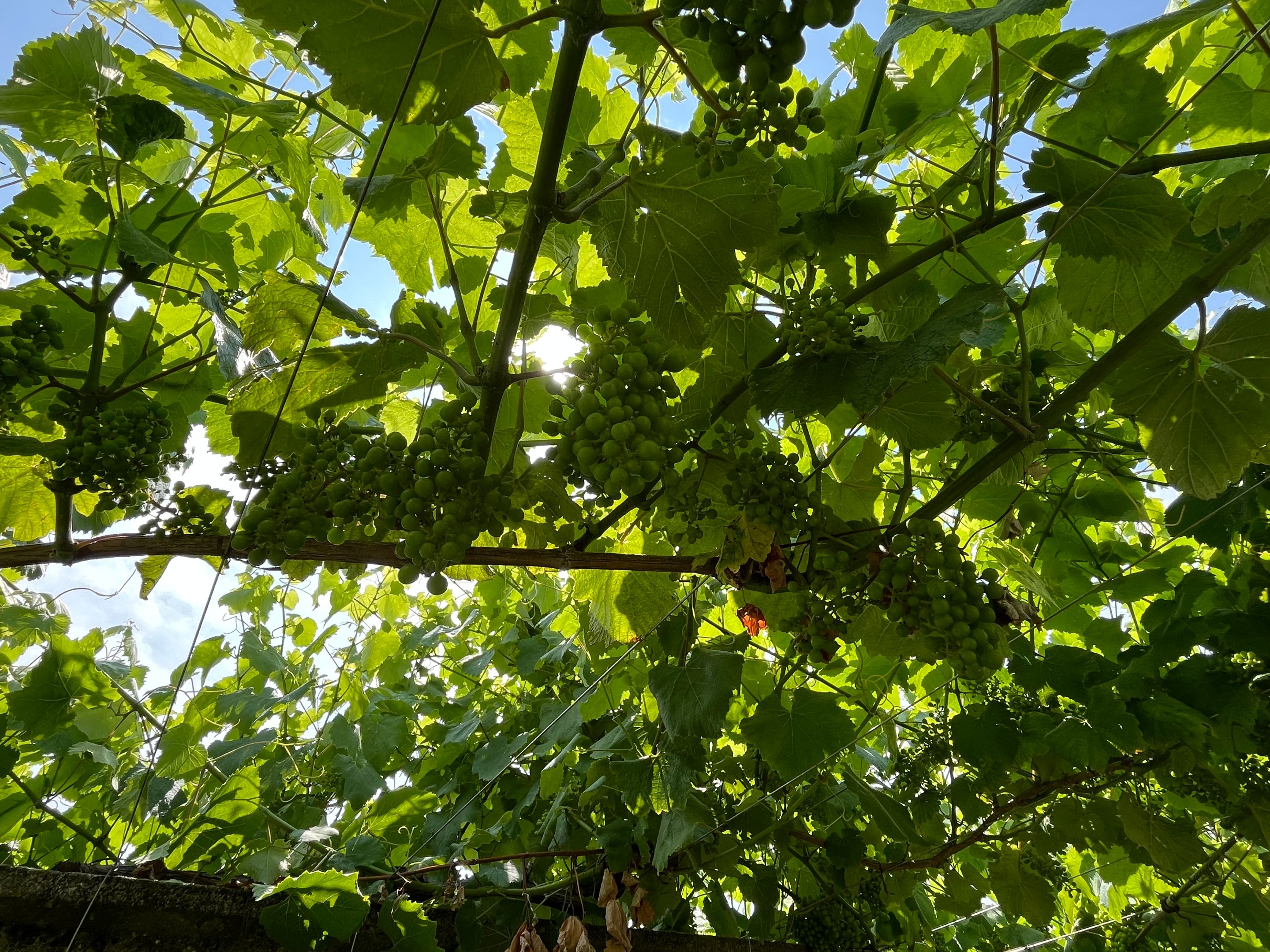

They also told us in detail about the type of trellis system used, which differs from the cultivation of vines in other latitudes, because good ventilation is sought to prevent diseases such as fungi from attacking the grapes, and also to keep the bunches away from the ground.
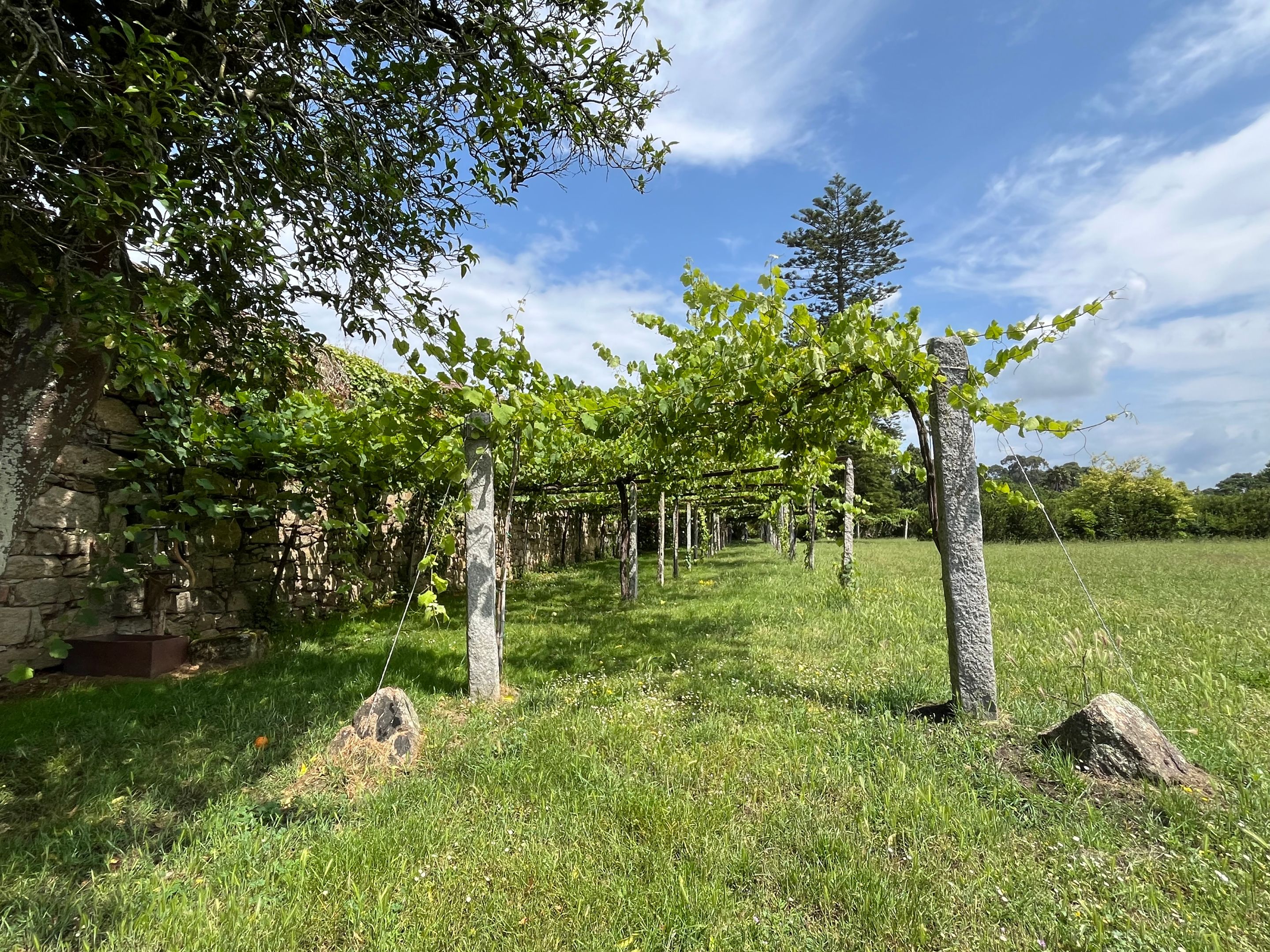
In the winery area, they showed us the different stages of wine production, including manual harvesting, destemming, pressing, and how, depending on the type of wine to be produced, they control the temperature through the vats to control the fermentation process.
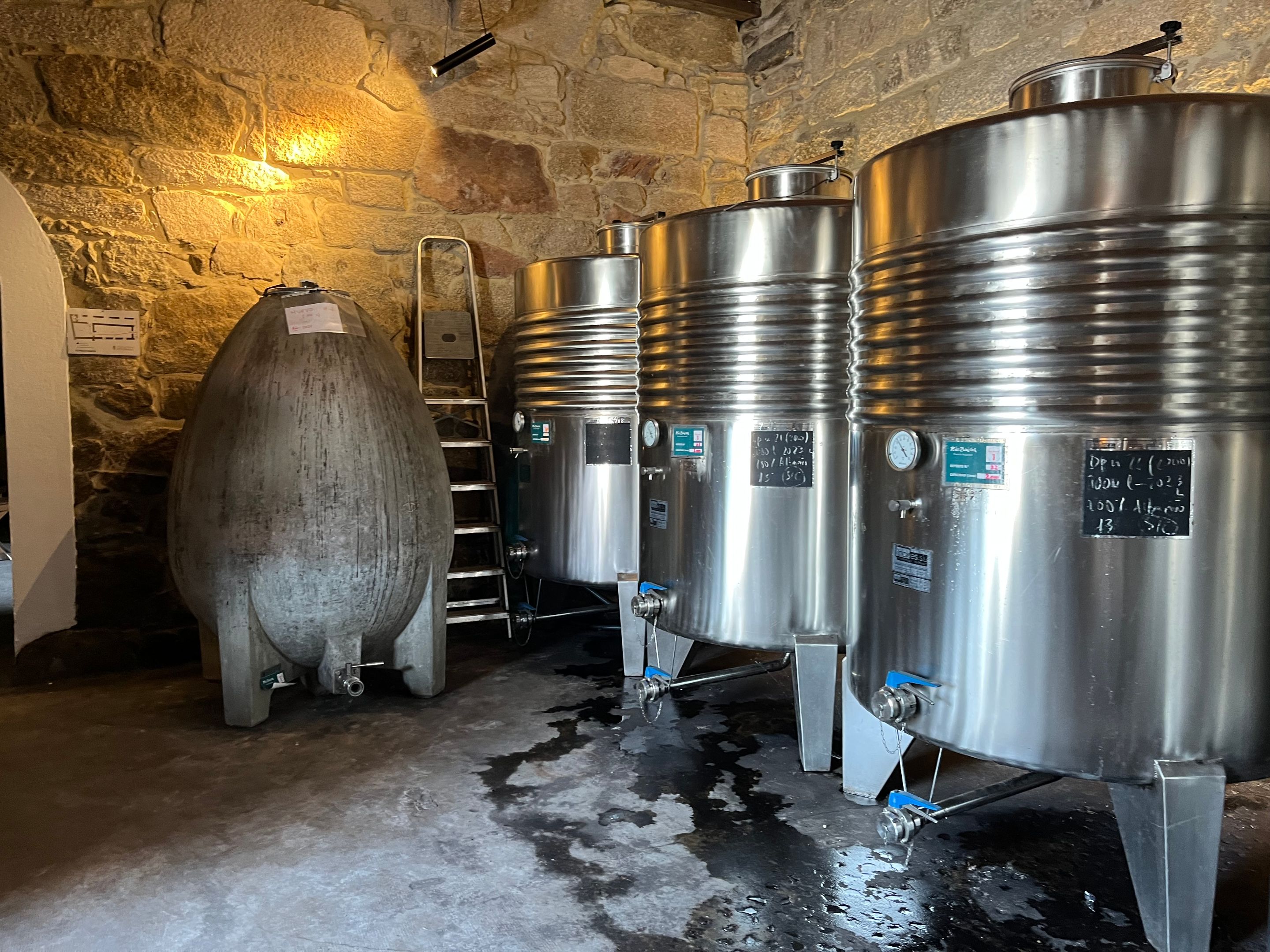
Another interesting fact that they explained to us is that Albariño wines, which are not marketed as young wines, are aged in French oak barrels, which changes the organoleptic properties of the wine, giving it a slightly different flavor.
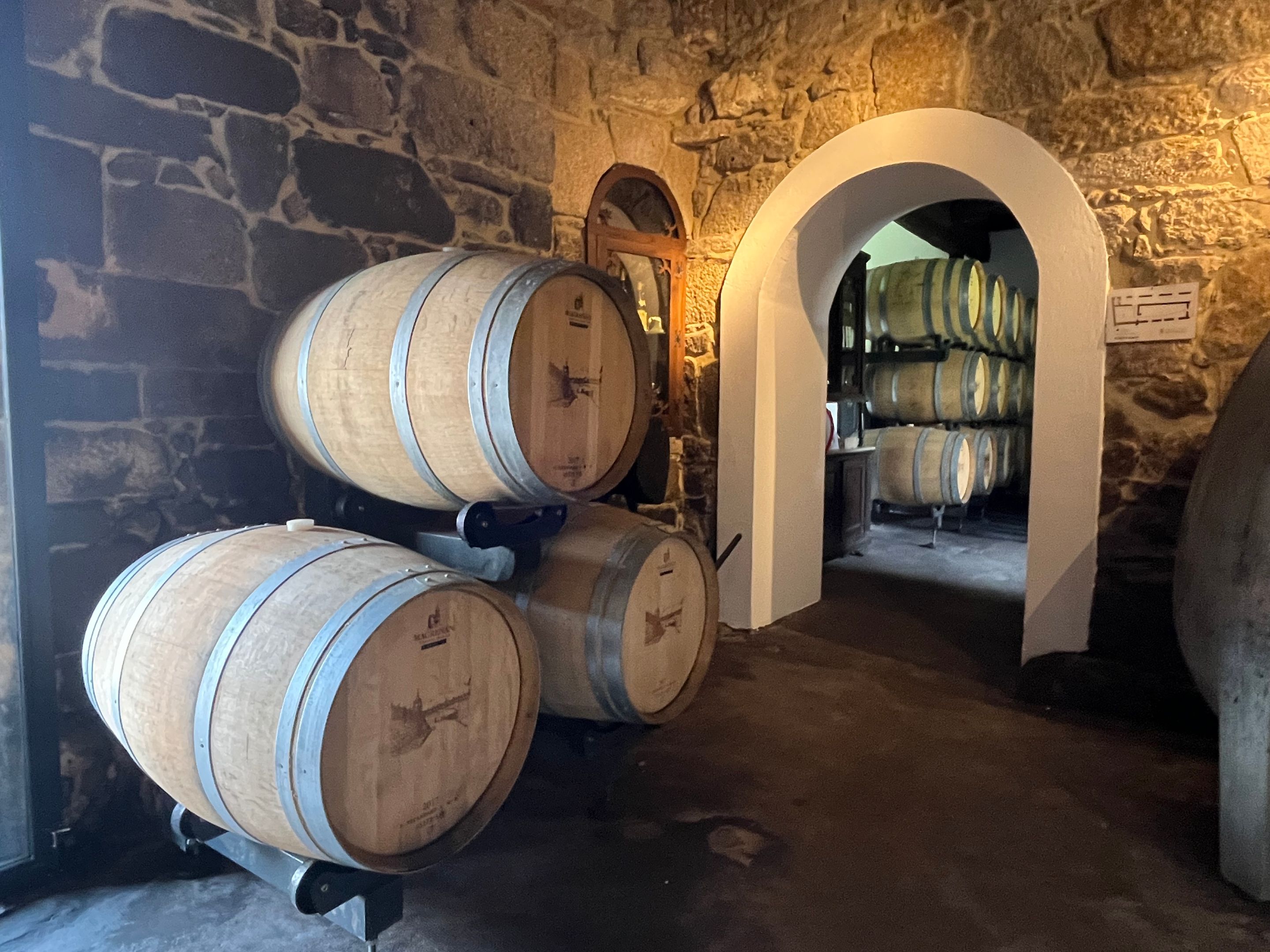
And the most interesting thing was seeing this large granite egg, which is actually a porous barrel that allows the wine to be in constant motion during fermentation. As part of the winery's R&D&I, they are studying the evolution of wine with a view to new formats of Albariño wine in terms of aging and fermentation. According to our guide, they will soon be able to produce a wine with excellent organoleptic properties using this innovative production method.
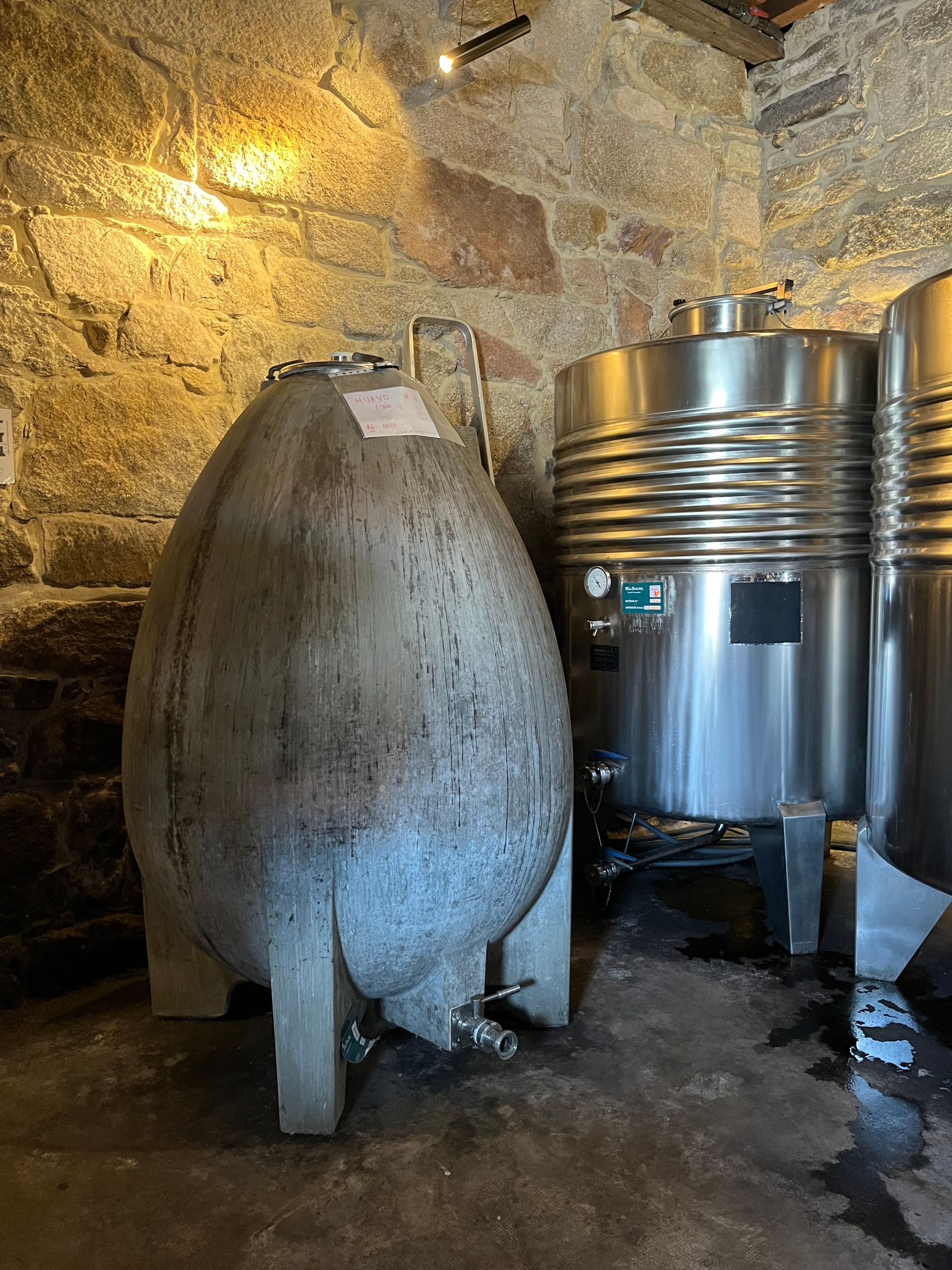
Finally, after the tour, it was time to taste the winery's three main wines.
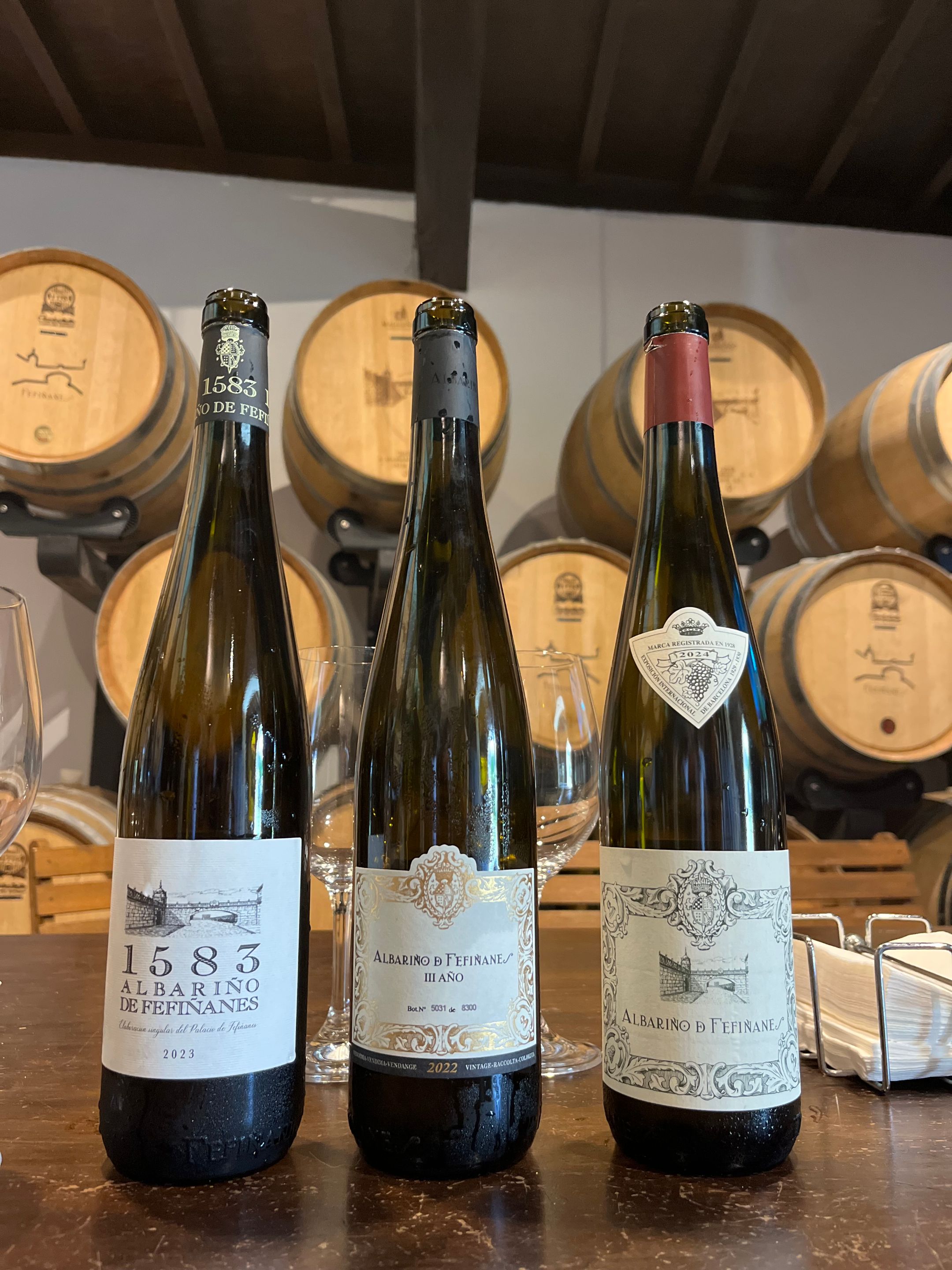
We started with the youngest wine, which had citrus and salty aromas, typical of young Albariño wines, and was really good.
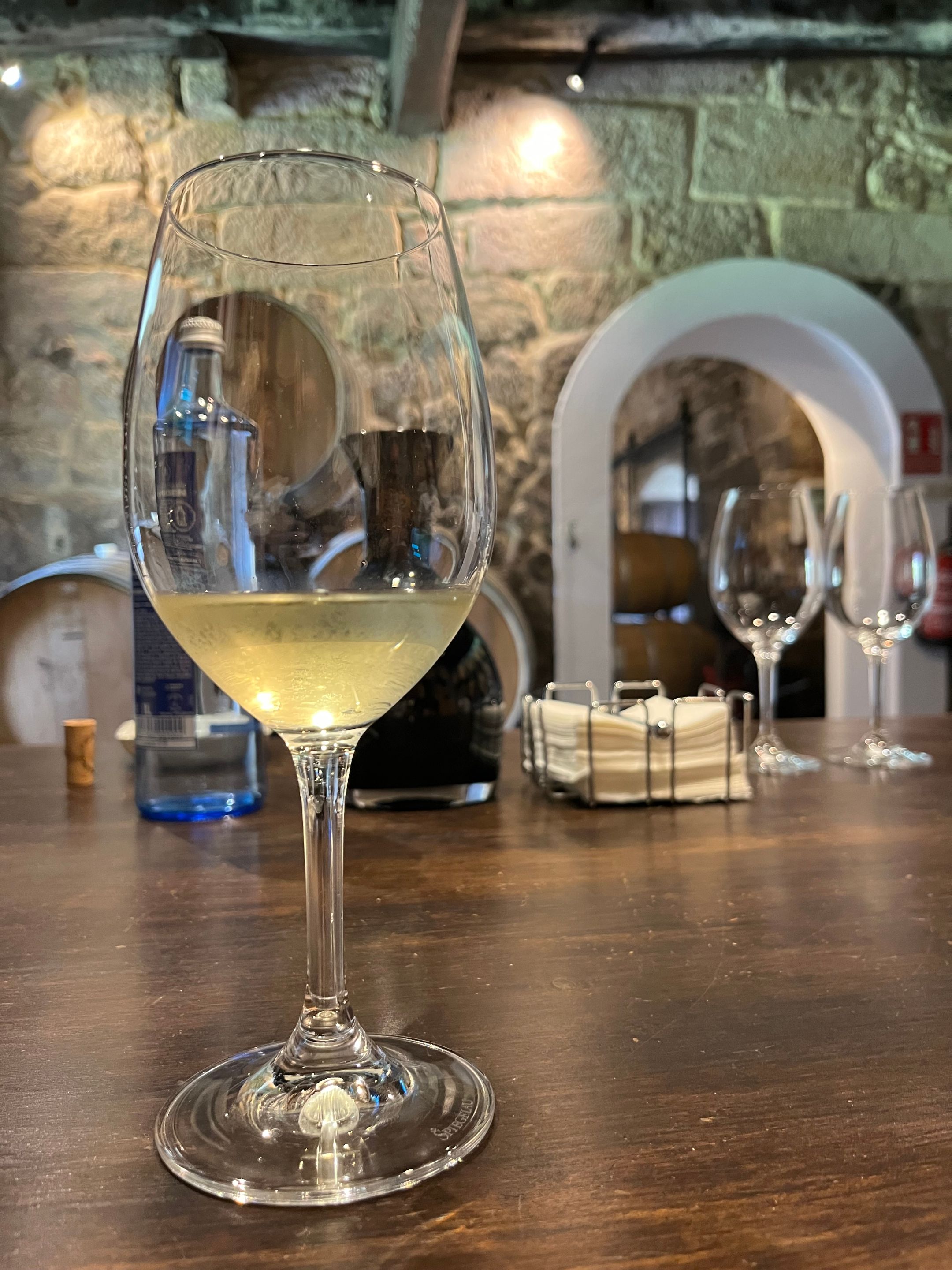
However, I prefer wines with a little more body, which have already undergone a certain period of barrel aging, such as the 1583 wine. This wine, which has a more opaque color, has a more elaborate flavor with hints of stone fruits (such as peach or apricot), which is very typical of barrel aging.
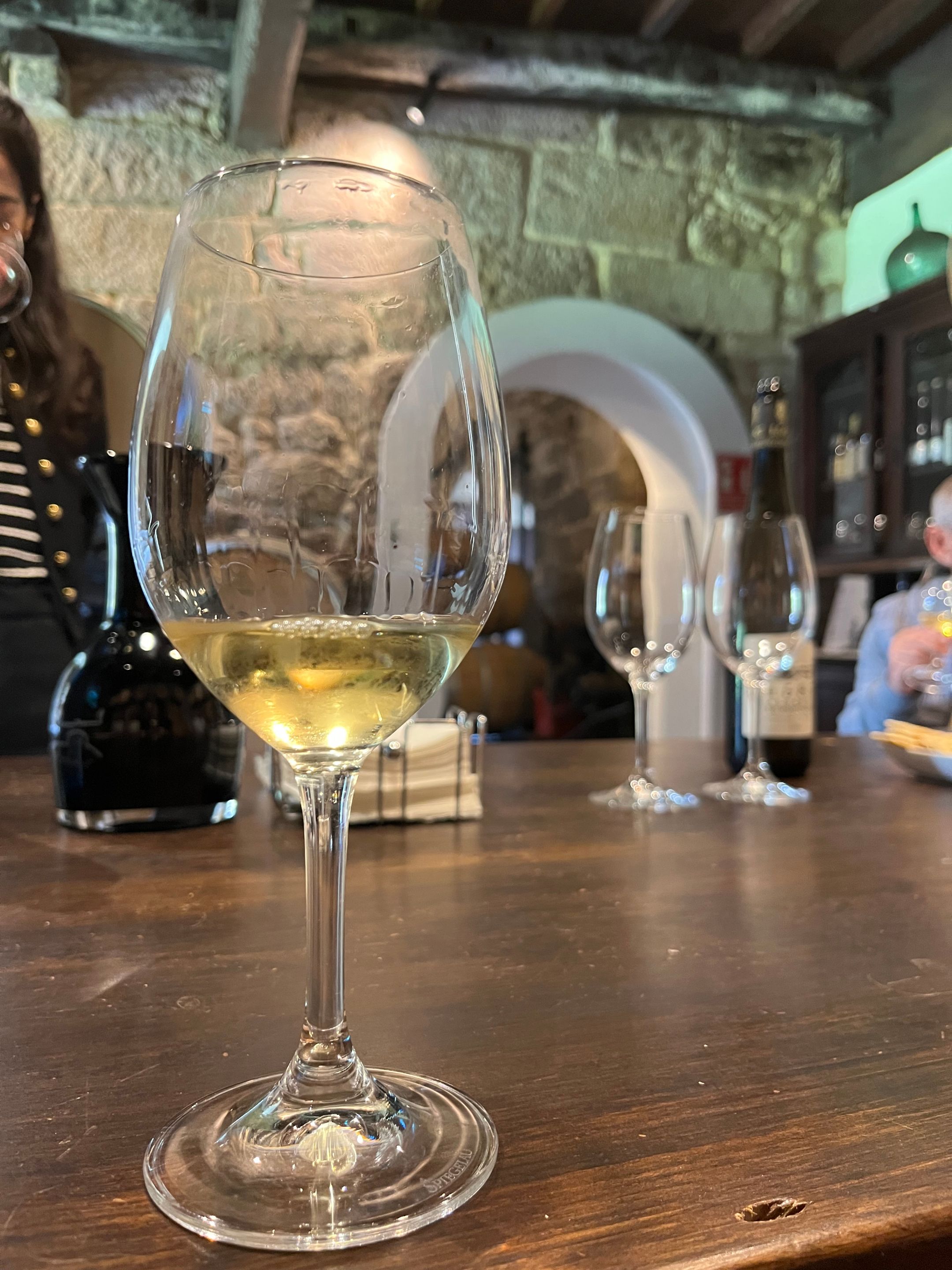
Finally, we were offered the Albariño Fefiñanes III año, a wine that had been aged much longer in barrels and was truly superior to the already high quality of the other two wines offered.
After the tasting, it was time to take some photos in the garden as a souvenir of this wonderful experience and as the finishing touch to our visit to the town of Cambados.
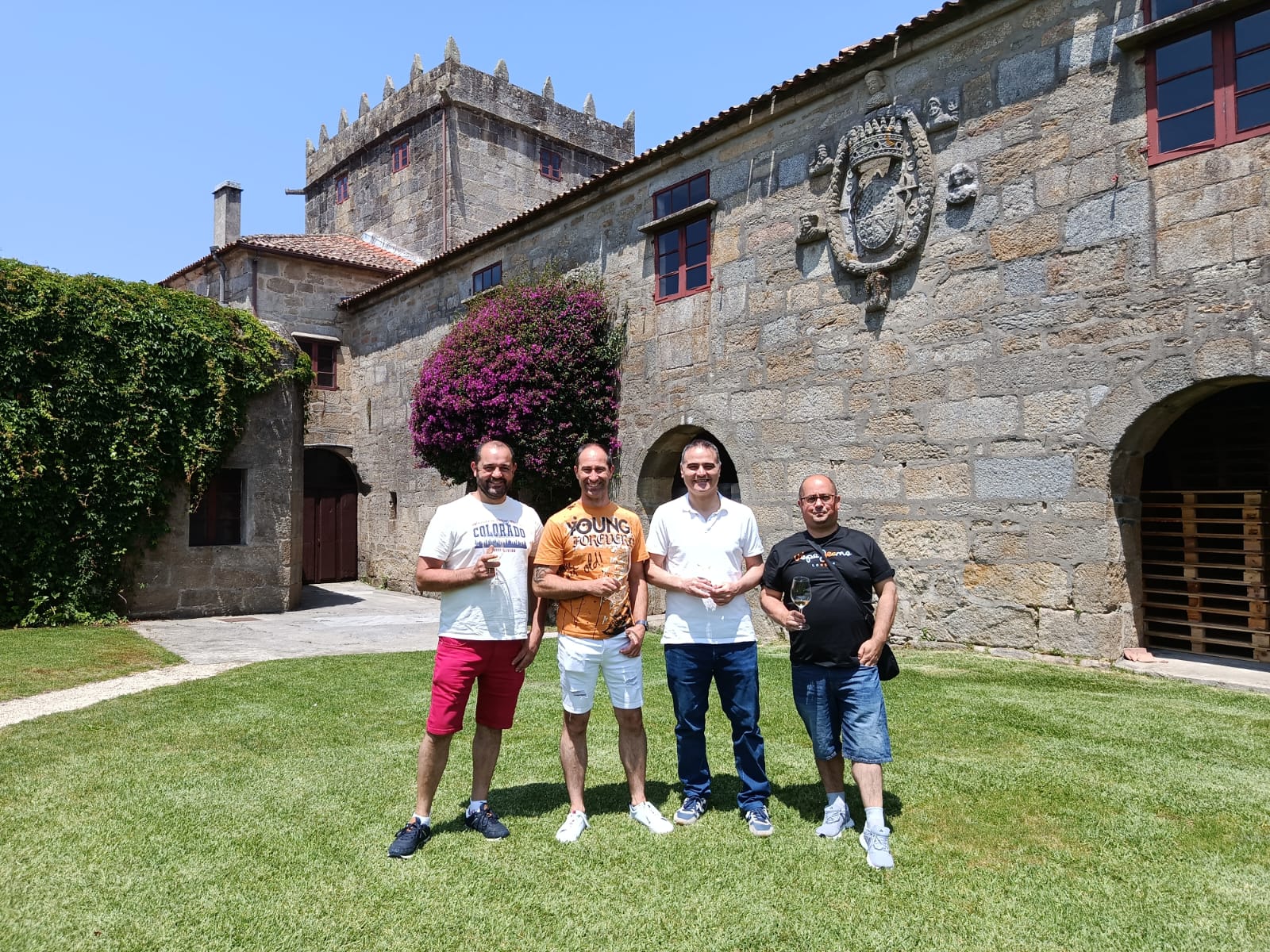
Best regards.

Cover and separators created with https://www.canva.com (free version).
Pictures taken with my iPhone 13.
Translated with www.DeepL.com/Translator (free version).
!worldmappin 42.518699 lat -8.813245 long